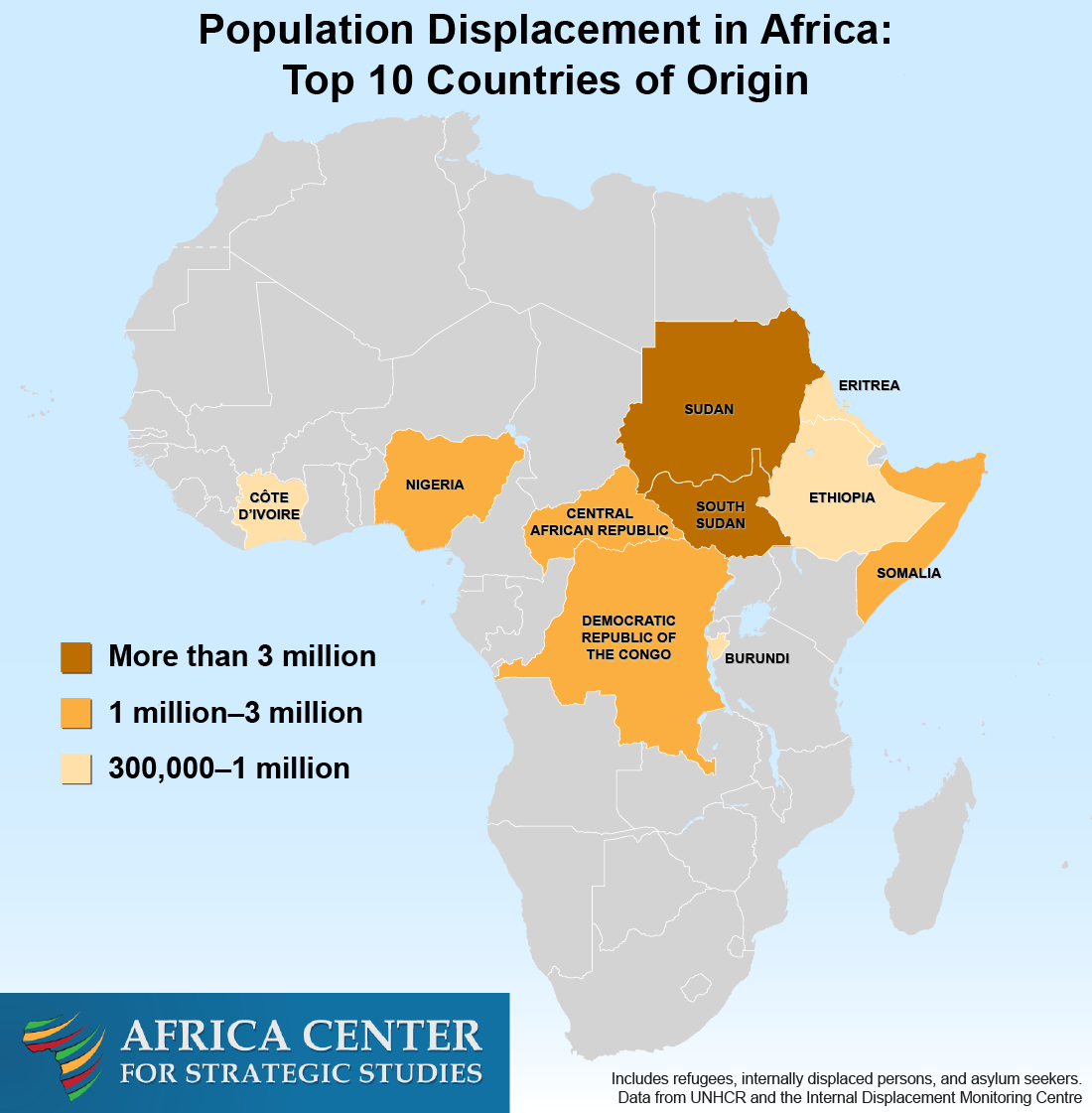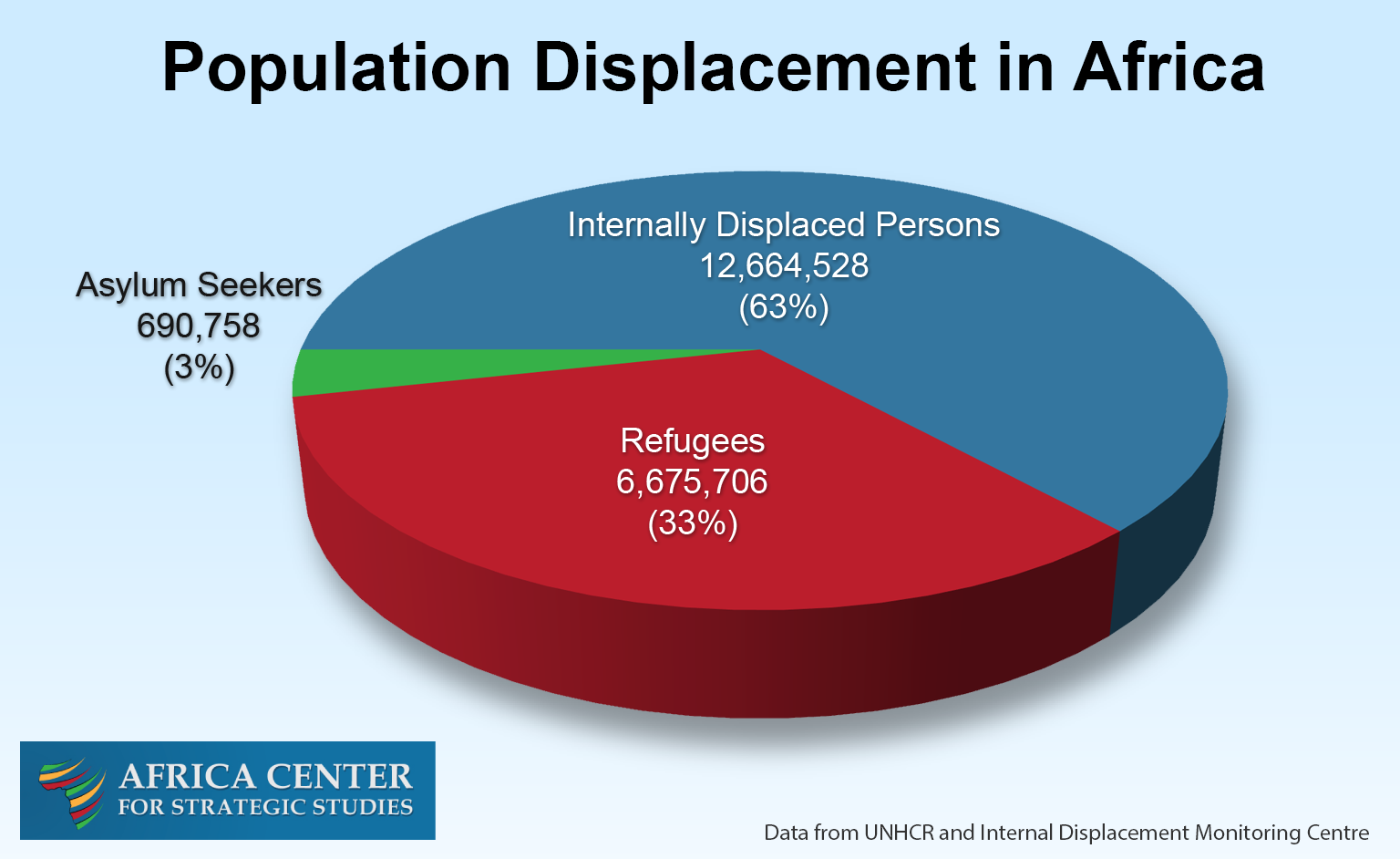In 2017, Africa’s population displacement crisis reached record levels, with over 20 million Africans now officially registered as refugees, internally displaced, or seeking asylum. Actual figures are likely higher. A snapshot of Africa’s displaced populations reveals that:
- Almost 75 percent of Africa’s 20 million displaced persons are from 5 countries: the Democratic Republic of the Congo, Nigeria, Somalia, South Sudan, and Sudan. Each of these countries is experiencing serious conflict.
- While global attention has focused on refugees, almost two-thirds of Africa’s dislocated population are internally displaced.
- The number of internally displaced people—12.7 million—represents a 65 percent increase since 2013.
- More than 44 million Africans are estimated to be at a crisis or emergency level of food insecurity. Parts of Nigeria, Somalia, and South Sudan are at risk of famine.
- In the past year, 51 humanitarian workers have been killed in the Central African Republic, Kenya, Mali, Nigeria, Somalia, and South Sudan, impeding efforts to provide assistance.
- Eight of the top 10 countries of origin for Africa’s displaced populations have autocratic governments.
Additional Resources
- Africa Center for Strategic Studies, “Burundi Refugee Flows Continue to Increase,” infographic, June 19, 2017.
- Africa Center for Strategic Studies, “Humanitarian Need and Displacement in South Sudan,” infographic, March 14, 2017.
- Africa Center for Strategic Studies, “Intrastate Conflicts Fuel Refugee Movements,” infographic, June 20, 2016.
- Malin Mobjörk and Sebastian van Baalen, “Climate Change and Violent Conflict in East Africa: Implications for Policy,” Stockholm International Peace Research Institute, April 2016.
More on: Africa Security Trends Burundi Democratic Republic of the Congo Migration Nigeria South Sudan




